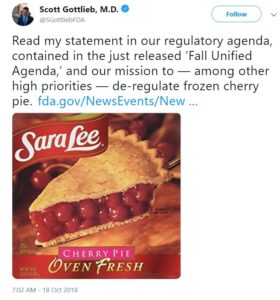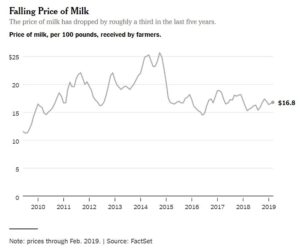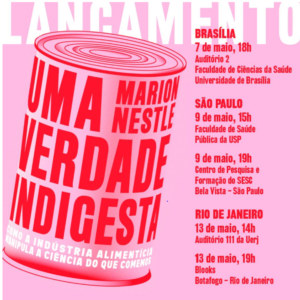The number of cherries in pie: a regulatory priority?
I don’t know whether to laugh or cry when I hear things like this. According to a report from the Associated Press, the FDA plans to follow the Trump administration’s deregulaory agenda by getting rid of the standard of identity rules for frozen cherry pies.
The rules currently require commercial frozen cherry pies to be filled with “mature, pitted, stemmed cherries that are fresh, frozen, and/or canned,” to contain at least 25% cherries by weight, and to have no more than 15% of the cherries with blemishes.
In October, then-FDA Commissioner Scott Gottlieb sent out this tweet.

In a June email, the FDA said it planned to revoke the standard for frozen cherry pies in April. It has kept its word.
My questions:
- Without the standard of identity, are we likely to have more or fewer cherries in frozen cherry pie? [Want to make a bet? I’m guessing fewer].
- What lobbying group got the FDA to do this, and why did the FDA agree?
- Did ex-Commissioner Gottlieb really consider this a top priority for FDA? [If so, we are in even worse trouble than even I imagined].
I’m stuck on regulatory priority. Food safety, anyone?
As for the origins of the cherry pie count, see this excellent piece in the Washington Post by historian Xaq Frohlich.




